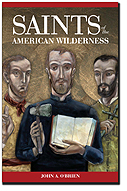 (cross-posted from Chez VH)
(cross-posted from Chez VH)I am so thrilled to be in the process of reading the Holy Father's new book, Jesus of Nazareth: Holy Week from the Entrance into Jerusalem to the Resurrection. The book is published by Ignatius Press and will be released on Thursday, March 10th.
I loved the first book, Jesus of Nazareth: From the Baptism in the Jordan to the Transfiguration, which I reviewed on Love2learn.net. I led a discussion group on the book with some homeschooled teens that proceeded slowly through the book over the course of many months. I wrote a number of blog posts about the book and the discussion on my old blog. We also own the first book on audio, purchased especially for my teenage son, who plugs through complex material rather well when it's in audio format. I like to keep this audio on my iPod and re-listen to chapters here and there. It's that good. (Note: The second volume is also being released in an audio edition.)
I want to make very clear that the teens in my group and I as their leader all got a lot out of the book, but didn't pretend, or even really attempt, to understand everything in the book. We studied one chapter per week and tended to focus on the additional significance and meaning that Pope Benedict brought out of each of the Gospel stories. There were some tough vocabulary words here and there, but the process of understanding became easier as we encountered the words multiple times (words like eschatology) and were also aided by a very handy glossary in back (this second book also includes a glossary).
I just received my soft-review-copy of this new book yesterday, so I've just made it to the first segment that I'm permitted to talk about before the release of the book: Chapter 3, Section 4 on "the Mystery of the Betrayer" (in the midst of a chapter on the Last Supper). There are two things that caught my eye in this segment that I thought I'd share here. The first is that the pope interprets Jesus' words regarding his betrayer as something that also applies to some in the Church in the future.
So the psalm verse casts a prophetic shadow over the Church of the evangelist's own day, in which the Eucharist was celebrated, and indeed over the Church of all times: Judas' betrayal was not the last breach of fidelity that Jesus would suffer. "Even my bosom friend, in whom I trusted, who ate my bread, has lifted his heel against me' (Ps 41:9). The breach of friendship extends into the sacramental community of the Church, where people continue to take 'his bread' and to betray him.I'm always amazed at how reading Pope Benedict's writings (both before and after he became pope) challenge me - not only in forcing me to put in the effort to understanding, but also, in a more philosophical way, to expand the way I look at my faith and at the world through the lens of my faith.
Jesus' agony, his struggle against death, continues until the end of the world, as Blaise Paschal said on the basis of similar considerations. We could also put it the other way around: at this hour, Jesus took upon himself the betrayal of all ages, the pain caused by betrayal in every era, and he endured the anguish of history to the bitter end.
The second piece that struck me is the concept of Judas' second tragedy and the idea of a wrong kind of remorse:
His second tragedy - after the betrayal - is that he can no longer believe in forgiveness. His remorse turns into despair. Now he sees only himself and his darkness; he no longer sees the light of Jesus, which can illumine and overcome the darkness. He shows us the wrong type of remorse: the type that is unable to hope, that sees only its own darkness, the type that is destructive and in no way authentic. Genuine remorse is marked by the certainty of hope born of faith in the superior power of the light that was made flesh in Jesus.Powerful stuff! I think both of these passages help illustrate how much we should look on the Gospels, and an illuminative study of the Gospels, as something comprehensively relevant to our lives today.
























